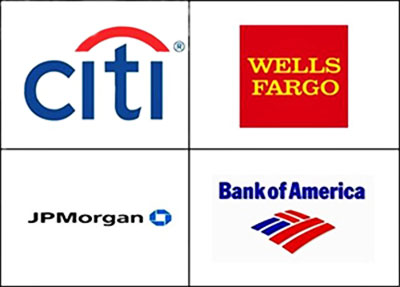|
October 10, 2013
Before Wall Street took a bazooka loaded with credit default swaps and toxic mortgage securitizations and fired it directly at the heart of the U.S. economy, we had a very stable banking system.
In the five years before
the
2008 crash, only 10 banks failed in the United States. Let me
repeat that: ten banks went belly up in the entire period between January
2003 through December 2007.
With an average of two bank failures per year in
the five years before the crash, that means banks are still failing at 10
times the pre-crash rate. But the numbers get worse from there.
The difference is that 819 banks or savings
associations have merged, typically to survive. The missing deposits likely
went to pay down debts, moved to uninsured money market funds, into the
stock market or bond mutual funds to earn extra yield.
Four institutions,
...four institutions out of 8,246, controlled at
that time 35 percent of all the insured domestic deposits.
According to FDIC data, the 8,246 banks and savings institutions have melted away to a new total of 6,940. Bank of America, JPMorgan Chase, Wells Fargo & Co. and Citigroup, now control a combined $3.511 trillion in domestic deposits, a stunning 58.8 percent of all 6,940 U.S. banks’ domestic deposits of $5.966 trillion.
The market share of these four giants has
increased by an astonishing 24 percent in just 4 years.
As many have long suspected, this data
conclusively proves that crime pays on Wall Street.
|

